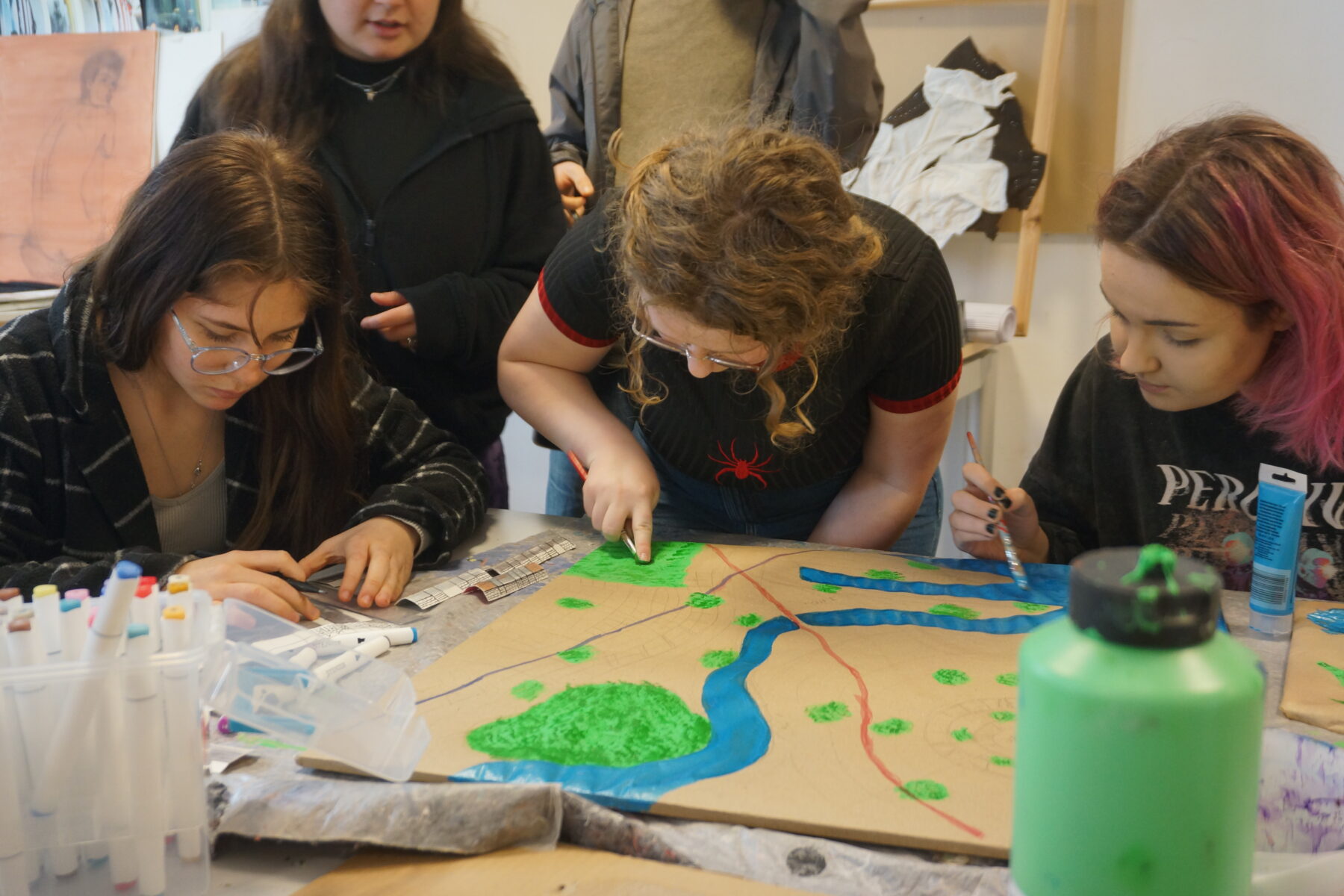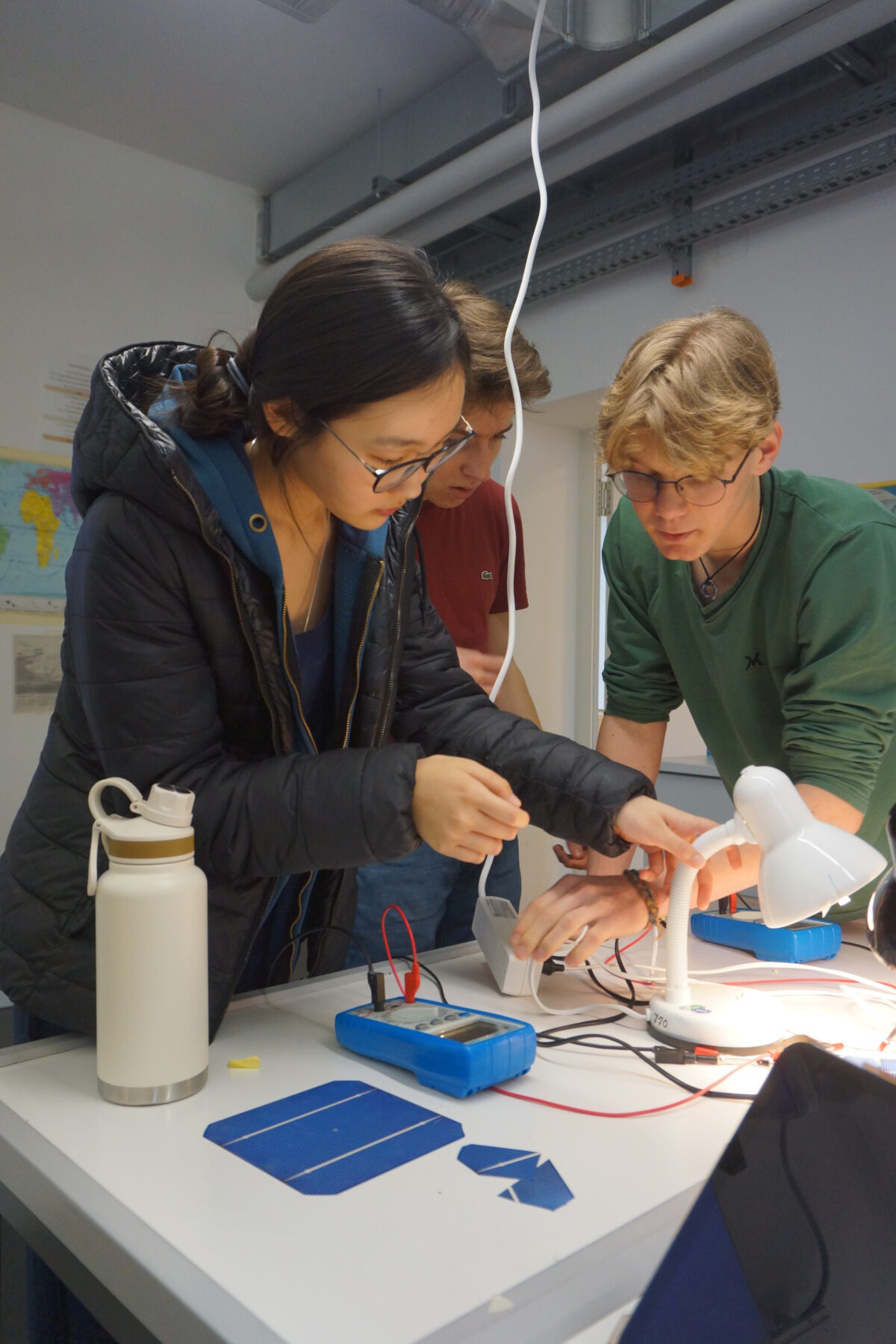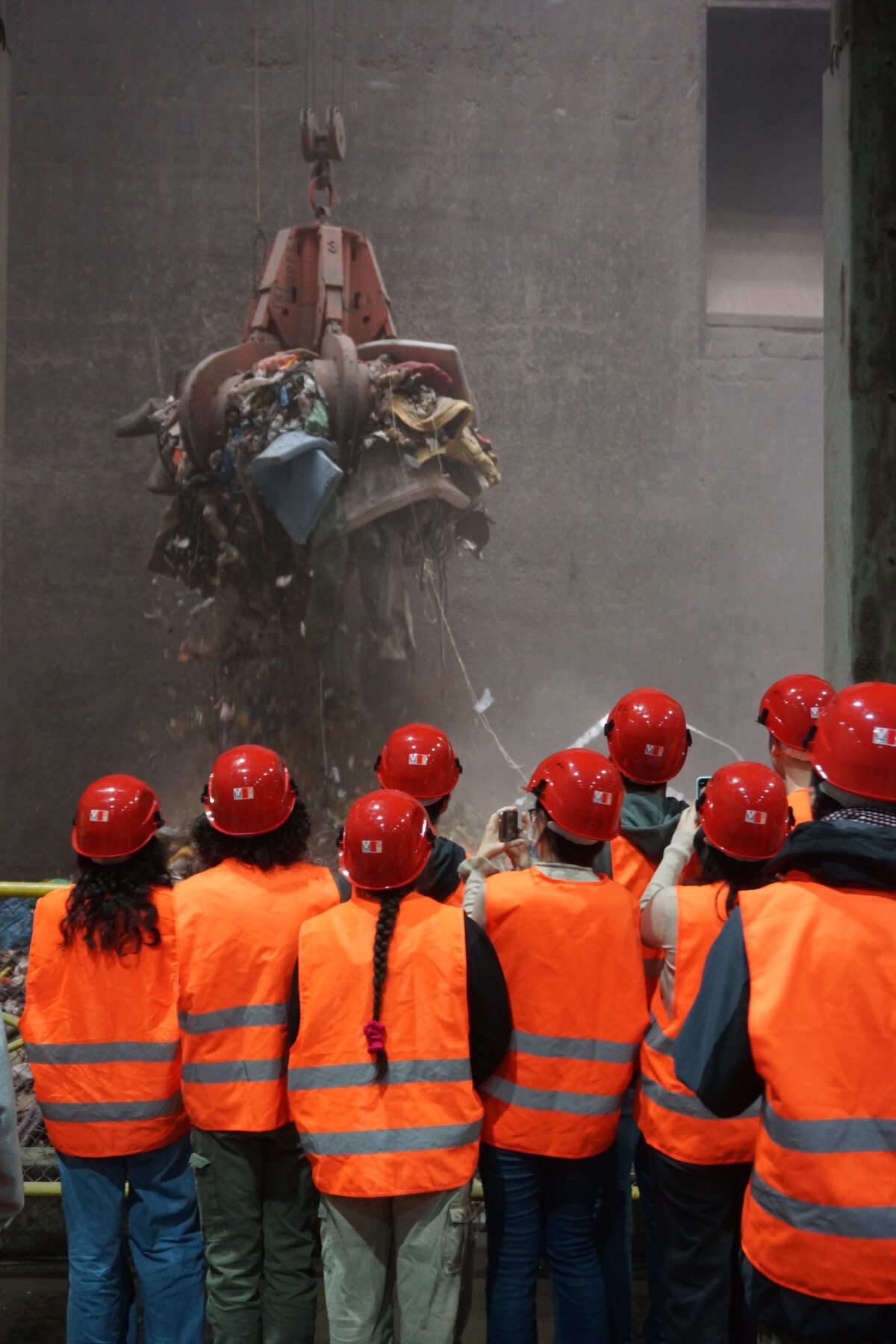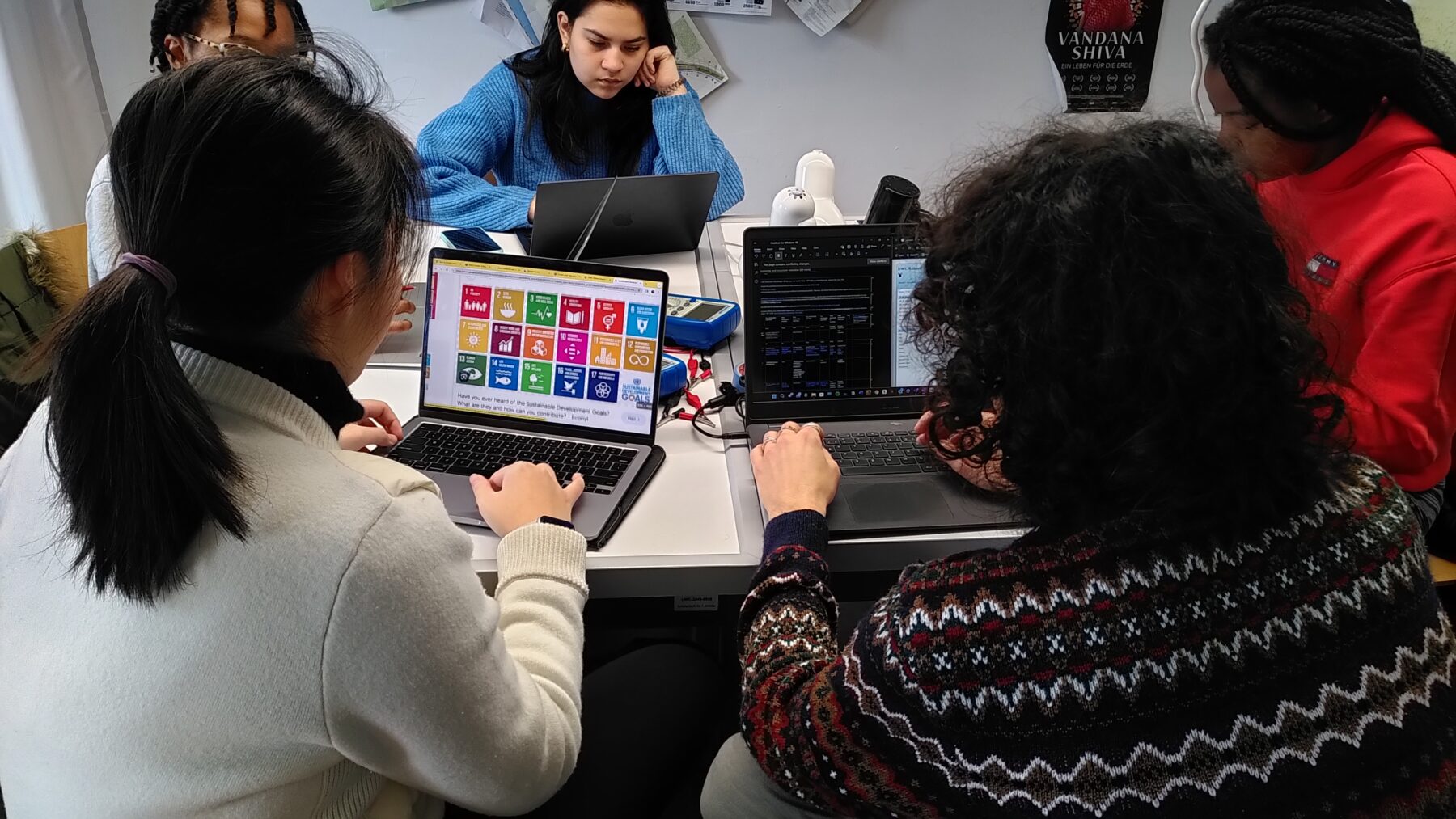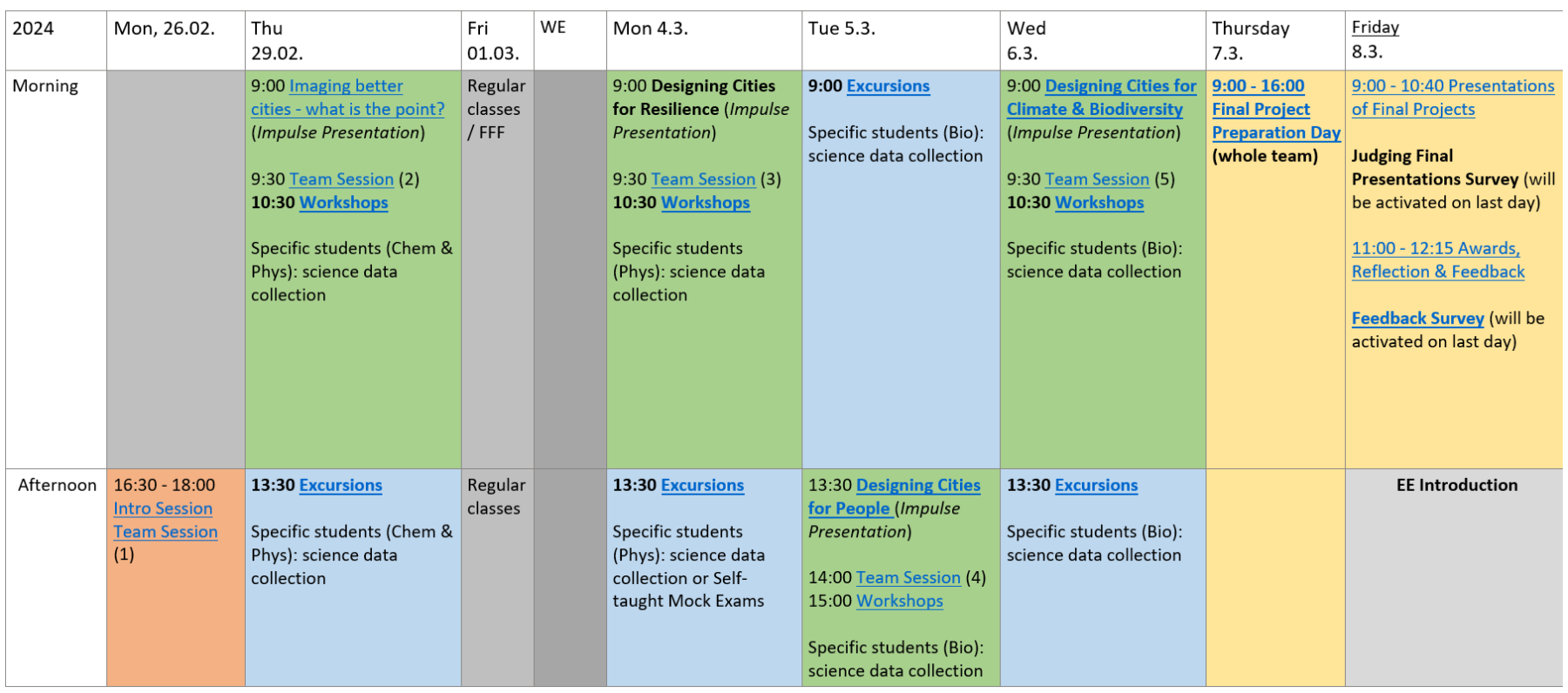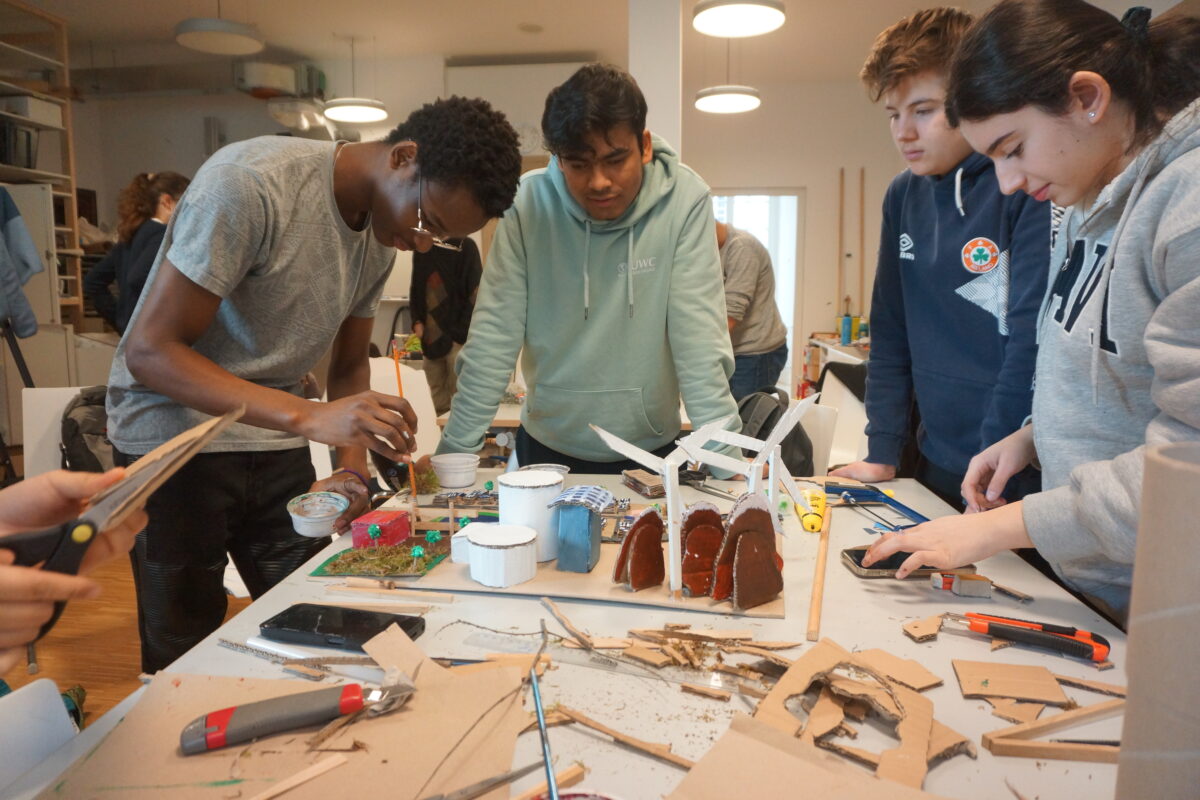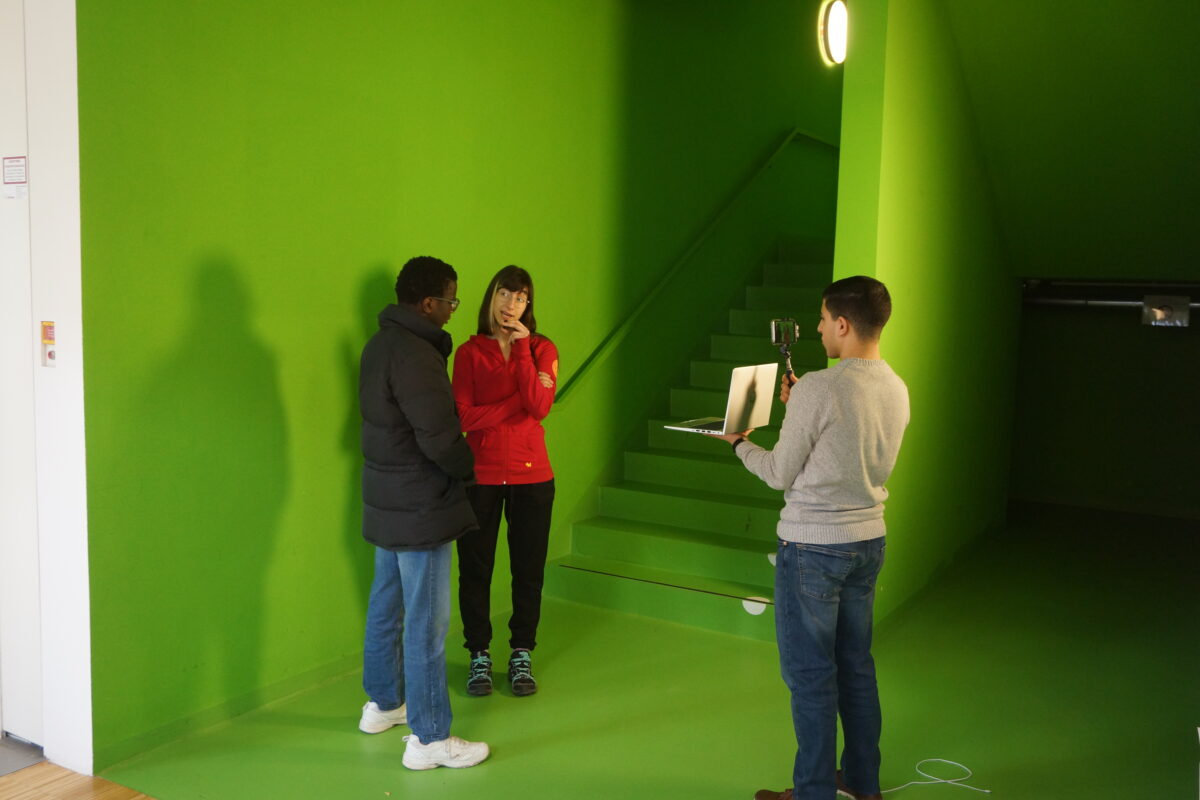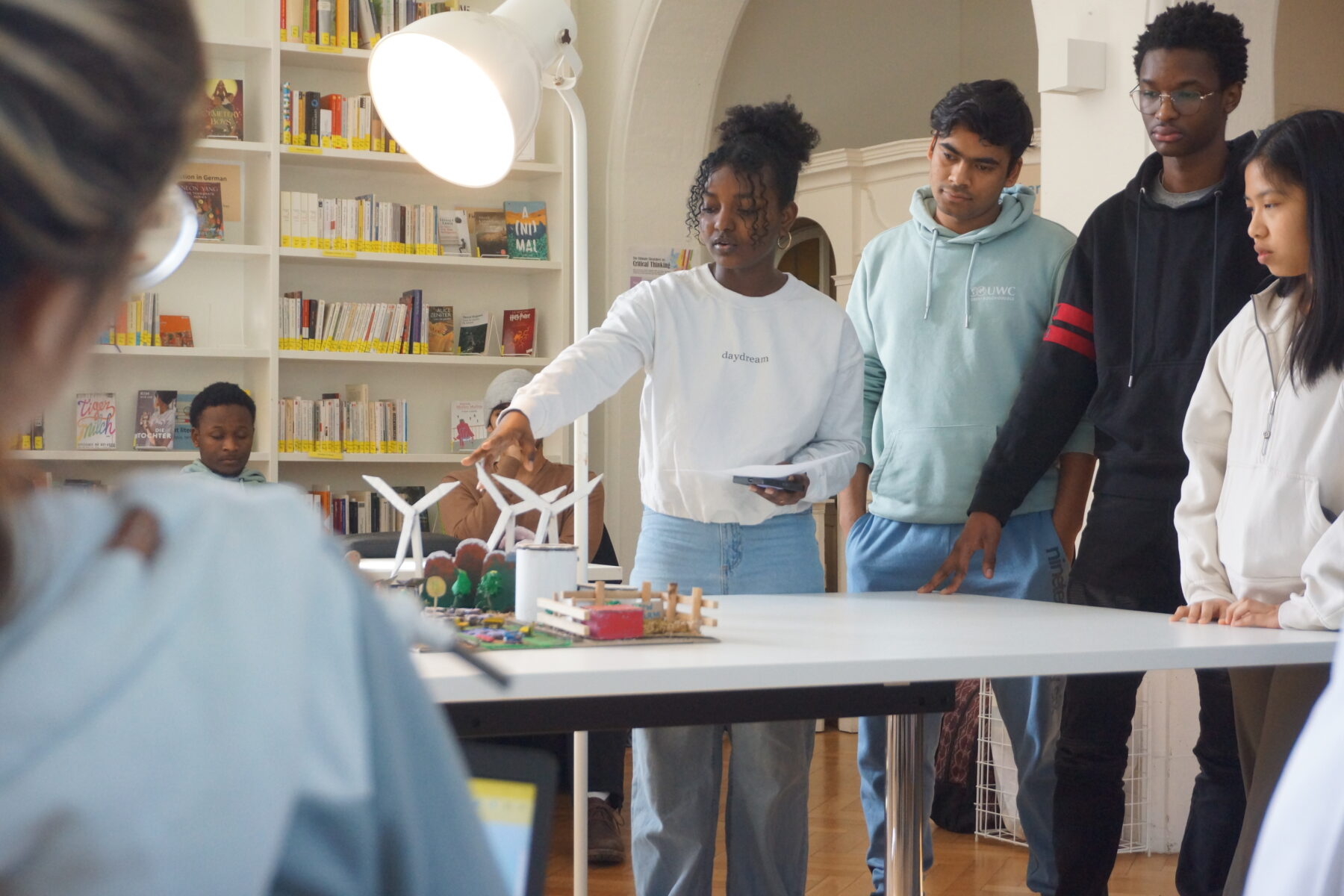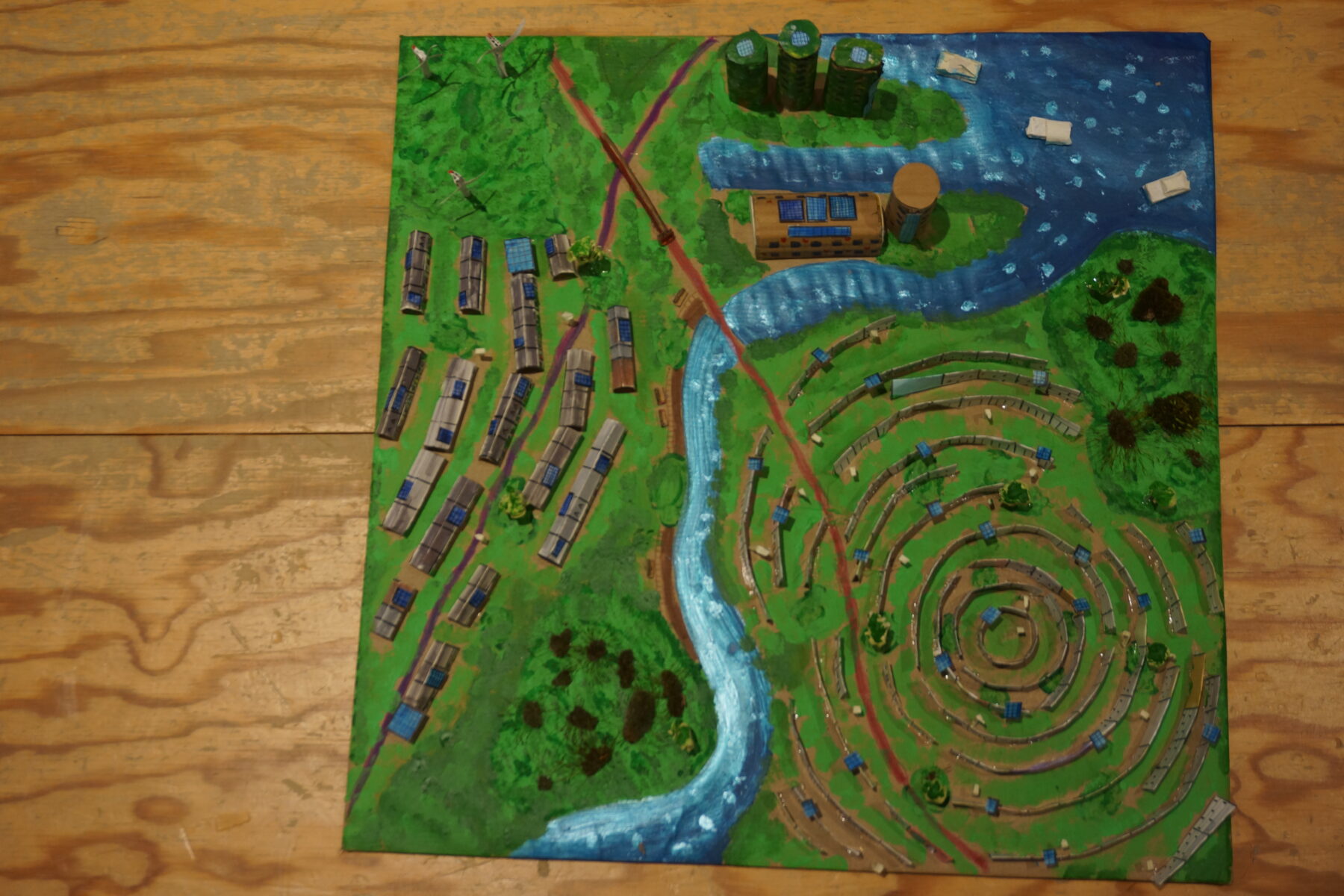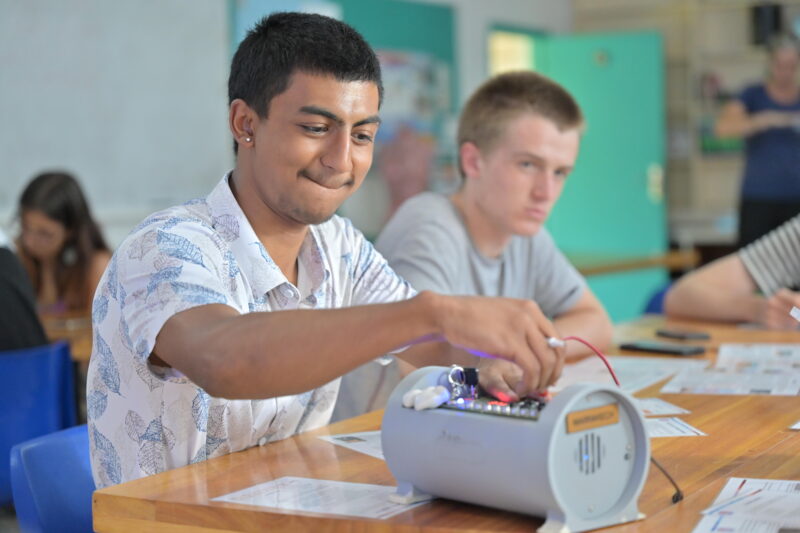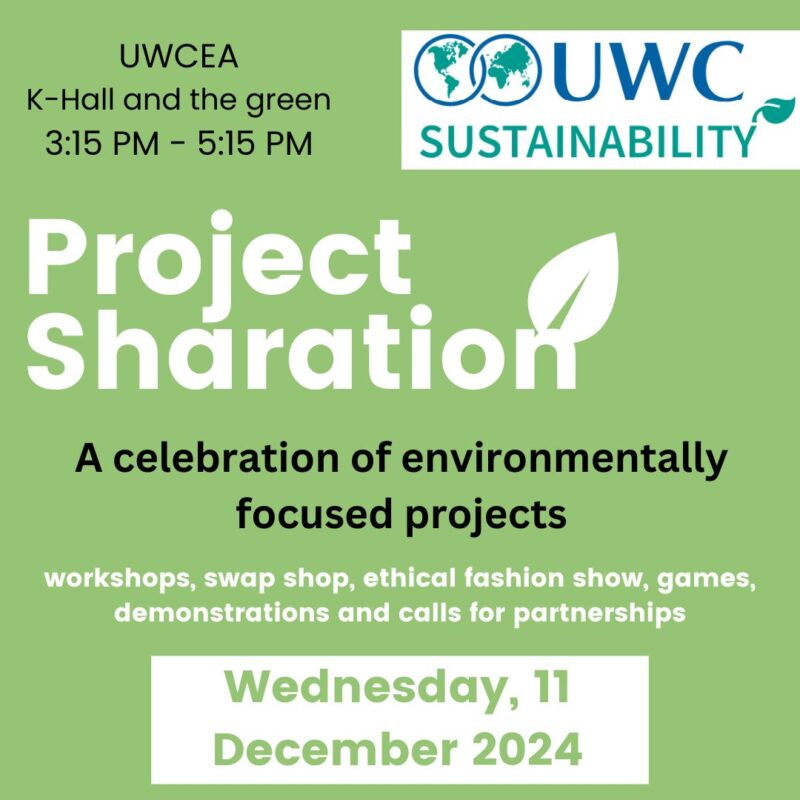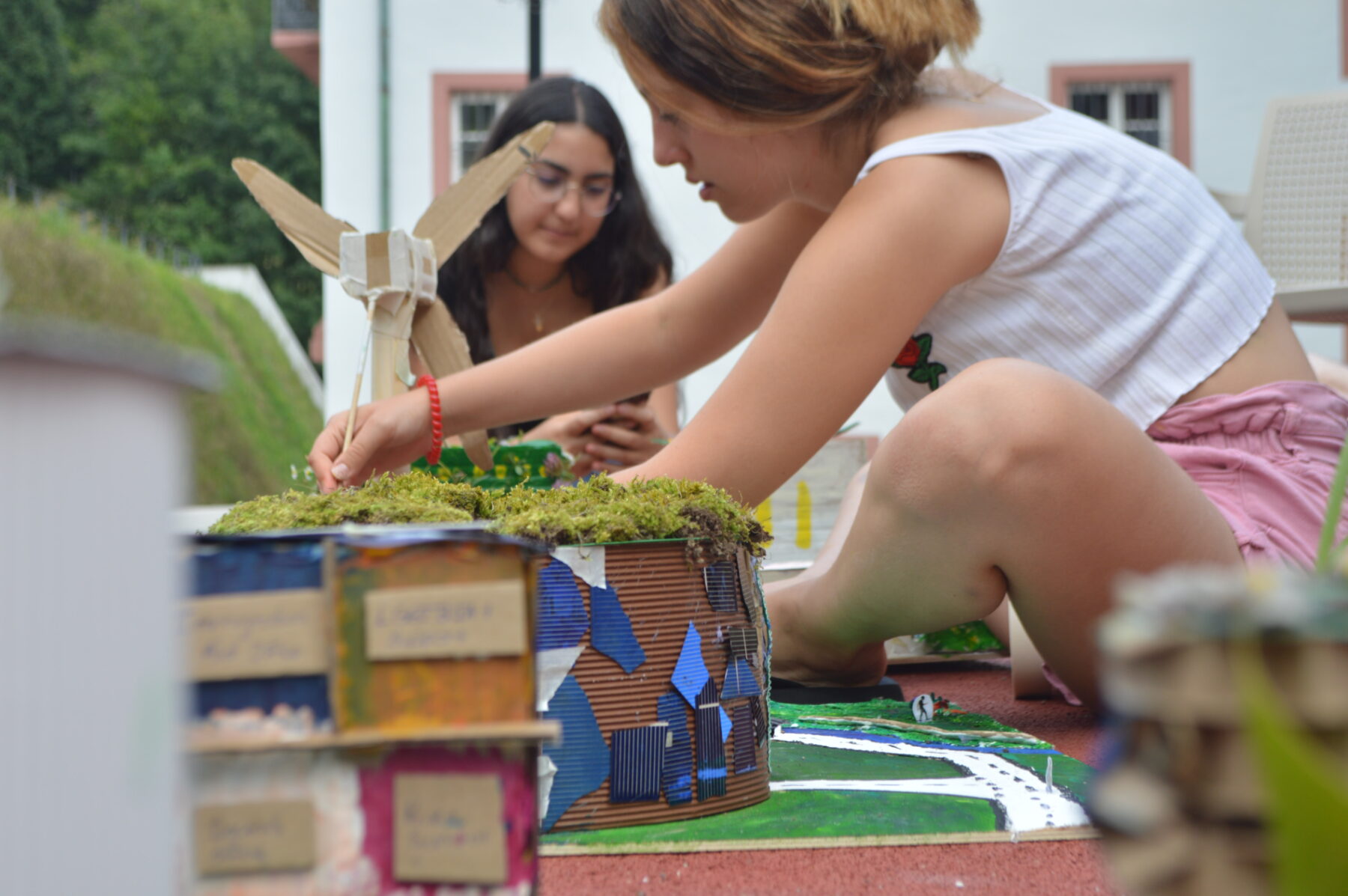
‘Liveable Cities of the Future’ Project Week
Details
How can we design and develop liveable cities for the future? This question is explored during a week-long interdisciplinary learning experience at UWC RBC. With regular classes suspended and through workshops, excursions, films, discussions and hands-on creative work, students and teachers get a better idea of how cities work – and what’s needed to make them more sustainable.
Background – how (and why) G4 week morphed into “Liveable Cities of the Future Week”
Motivation: Giving space to sustainability
Our school was established with a “special focus” on sustainability in a city (the “green city” Freiburg) known for its many sustainability projects and initiatives.
But we found it challenging to do justice within the normal classroom teaching framework – excursions into the city are logistically challenging to fit into a 90 minute class timeslot, and many of the topics we feel our students should learn more about are barely touched on in IB syllabi, especially for students not taking Environmental Systems and Societies.
The past: Making the most of the Group 4 project
This is why from the beginning we had identified the IB Group 4 Project as an opportunity to spend more time on these topics and also find time for excursions to external partners. We decided to allocate a whole week for Y1 students working on this, allowing for an input phase with workshops and excursions and a project phase where students work in interdisciplinary teams (see details below). The week is scheduled during the time period when our Y2 students write their Mock Exams as for logistical reasons it is challenging to run normal Y1 classes during that period at our school, and we also schedule a large proportion of the Y1 IA lab/data collection work for that week, reducing the need for staff and students to do this lab work after classes (often in the evening).
The present: Truly interdisciplinary work beyond G4
The project started with an exclusive focus on natural science, in particular topics around renewable energy and waste disposal. However, feedback from students who wanted a more holistic perspective as well as the desire to get all staff equally involved (not just G4 teachers) led to the “Liveable Cities of the Future” (LCFW) format that combines sustainability (in all dimensions) and human wellbeing, allowing for an interdisciplinary perspective that goes well beyond just the natural sciences (but still fulfils the G4 project requirements).
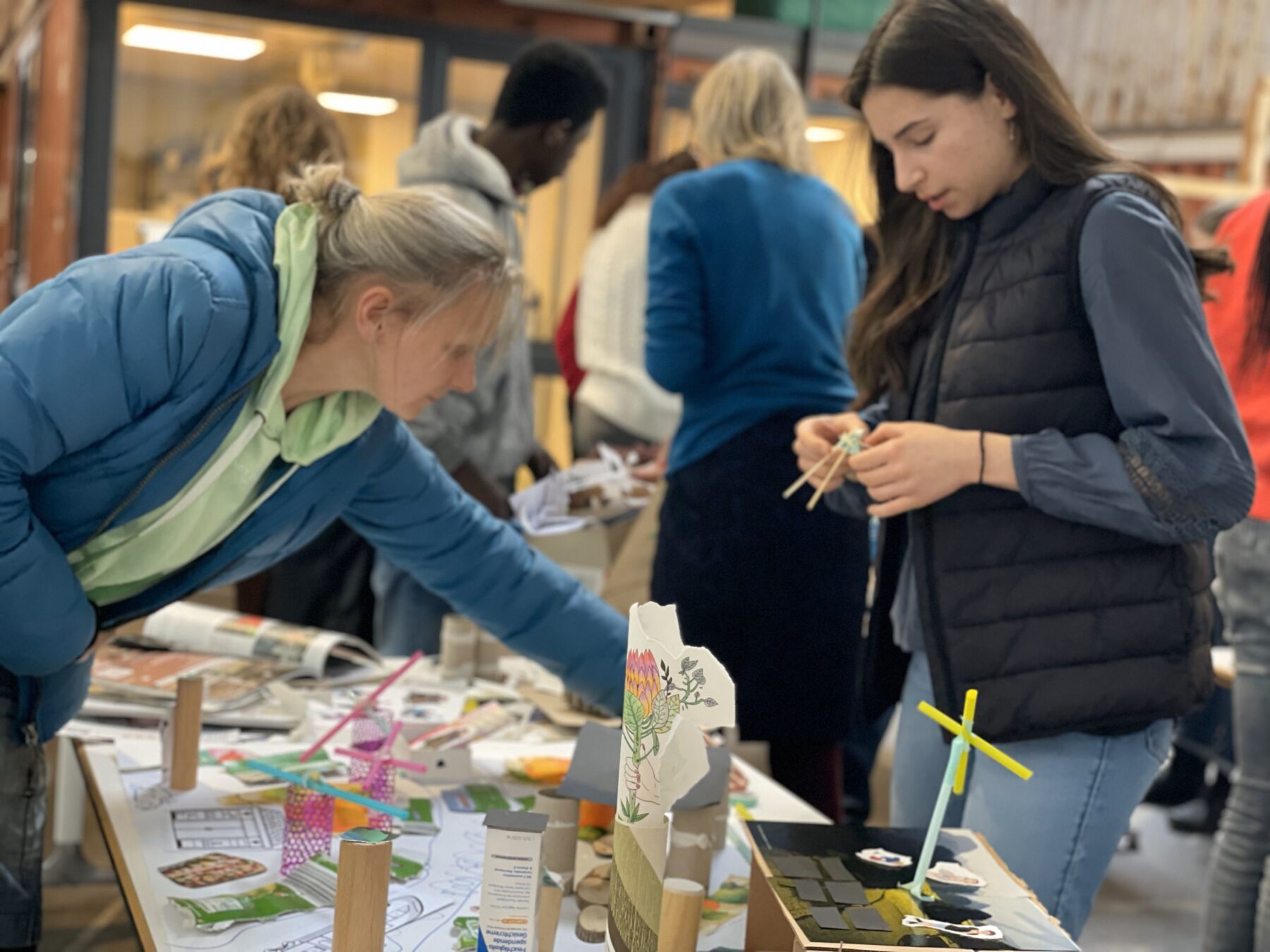
UWC RBC Liveable Cities Week 2024 – an exercise on creative city planning at the local Social Innovation Lab
Implementation
Staff preparation phase
One or two months before the week, we ask staff at our school what contributions they would like to make to the week. Contributions could be offering a workshop, planning or accompanying an excursion (which involves liaising with external partners) or helping logistically, e.g. by supporting students during their project work phase. Also, G4 teachers and laboratory staff plan which students will carry out what data collection experiments during the week, and when they will do it.
Student preparation session
A few days before the start of the week, students are organized in groups of six, given a general introduction to the week, assigned their “project city” – a mid-sized city somewhere on the planet, for which they are expected to develop a more “liveable” vision for the year 2050.
During the same session, students are also asked to sign up for workshops and excursions, keeping in mind their IA data collection time slots and making sure that within their group they have a balanced portfolio of workshops and excursions that matches the needs of their assigned city.
Workshop- & excursion-phase
During the first days of the week, students have half-days (3h) for excursions, and half-days that combine a short impulse presentation (with a topic like “Designing cities for climate and biodiversity“) with a team work phase (a period in which students work in their teams developing a positive vision for their city, guided by prompts and questions in a OneNote document that relate to the topic of the impulse presentation before the students go into heir chosen workshops, as shown in the calendar below (note: in 2024, we had a total of four days for the workshops- and excursions-phase, but obviously this can be adapted to limitations and requirements).
In 2024, we had 35 different workshops and excursions (involving 9 external partners) that collectively were offered a total of 49 times.
Individual students attended between 5 and 8 different workshops/excursions during the week, depending on their IA data collection workload.
Project phase
After several days of workshops, excursions and team work, the teams are then given a full day to work on a project that expresses their positive future vision for their city creatively, e.g. in the form of a physical model or a video.
The week closes with a half-day of students presenting their projects to each other, electing winning projects, reflecting on learning outcomes (including writing the G4 project statements) and giving feedback.
Tools used
We used Microsoft OneNote to build a central document which contained all relevant information for the week (instructions for students, instructions for staff supervising students, background materials, descriptions of modules). There are also sections for each student team where they can directly input their results (e.g. answers to research questions, documentation of their final project) during the course of the week.
Example results
Main areas for development (linked to specifc SDGs):
- Transportation,
- Green areas and well being of population,
- Waste management
Your vision for how this can be changed in the future:
- Improve the transportation system by implementing a bus network that links all the neighborhoods to eachothers and rebuildt the roads.
- Improve the waste management by implementing a Bio digestor and a power to energy plant. Improve the well being by adding
Outcome:
The group produced a newspaper for a future Kano, describing the changes they are proposing
uwc rbc liveable cities week group 1 kano newspaper
Main areas for development (linked to specifc SDGs):
- Life on land
- renewable and sustainable energy
- Sustainable cities and communities
- climate action
Your vision for how this can be changed in the future:
- Normalizing and introducing more nature to cities and citizens everyday lives, was our goal. This was done through planting more trees on streets or having more parks/playgrounds.
- Using Solar panels built on roofs and making hydro energy through the river that flows through the city, the energy consumption becomes more sustainable and renewable. Also Windturbines made that energy.
- Because Aberdeen has been affected by floods multiple times in the past, we have installed/made “sponge areas” around the city and dams to prevent those in the future.
- We also wanted areas of communities and shops to be in a walkable distance which is why we made a type of circle that has trains and bikes aswell, so less vehicles such as cars are used . Not only that but boats are now another means of transportation, because a river flows through the whole city.
Outcome:
The group produced a physical model of their vision for Aberdeen 2050
Main areas for development (linked to specifc SDGs):
- Impact of Natural Events: Heat Waves and Floods – SDG: 15. Life on land, 13. Climate action,
- Green areas working as sponge areas and cooling features.
- Street trees and tree pit gardens
- Buildings on mainly local clay
- Lack of Acessebility and Dignity: Poor Infrastructure – SDG: 9. Industry, innovation and infrastructure, 11. Sustainable cities and communities
- More sidewalks
- Streetlights
- Cyclepaths
- Pavement (actual)
- Usage of Non-Renewable Energy: Charcoal and Firewood – SDG: 7. Affordable and clean energy
- Hydropower
- Biogas (waste management)
- Lack of Sense of Community – SDG: 4. Quality education, 10. Reduce inequalities, 12. Responsible consumption and production,
- Public library (social center)
- Religion center
- Stadium
- Parks
The group produced a video for their future city
Main areas for development (linked to specifc SDGs):
- Water management
- Agriculture
- Social equity
- Mobility
- Security
- Waste management
- Governance
- Energy
- Economics
- Education
- Spirituality
Your vision for how this can be changed in the future:
We created a website filled with articles that provide ideas and suggestions on how we could change these issues in the future. We have different sectors that we focused and expanded on. Our vision involves tackling the root-causes of these issues and creating solutions with all of these factors in mind. We designed advanced mechanisms for water management, agriculture, waste management, and more. We researched equity problems in the social realm of Durango and implemented ways that we could overcome these issues in a way that abolishes potential residue from these issues. We further explored the economic sector of many of the problems being faced by Durango, and evaluated those through financial and ecological sustainability, prioritizing the well-being of the citizens. Reflecting on most of UN sustainable development goals, we were able to categorize our main areas of development and visualize them in a way that Vision Durable Durango would fit into these goals and eventually achieve them by them 2050.
Outcome:
The group produced a website, using AI-generated images, describing a their future vision for Durango, Mexico.
https://heervirwani.wixsite.com/vision-durango

